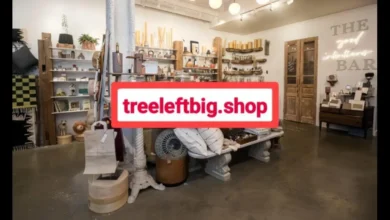The Ultimate Guide to Garden Edging: Tips and Tricks from gardenedgingexpert.com/blog

Introduction to Garden Edging
Welcome to the world of garden edging, where creativity meets functionality! If you’re looking to elevate your outdoor space and add a touch of charm, you’ve landed in the right place. Garden edging not only defines borders but also enhances the beauty of your landscape. gardenedgingexpert.com/blog It creates a clear distinction between different areas while keeping everything tidy and organized.
Imagine walking through your garden, admiring how beautifully each section flows into the next. With just a little planning and the right materials, you can achieve that perfect aesthetic balance. Whether you have a sprawling estate or a cozy backyard, there’s an edging solution for every type of garden enthusiast.
Ready to dig deeper? Let’s explore all there is to know about transforming your yard with stunning and effective garden edging techniques from gardenedgingexpert.com/blog!
Benefits of Garden Edging
Garden edging serves as both a functional and aesthetic element in landscaping. One of its primary benefits is defining borders between different areas, such as flower beds and lawns. This clear separation helps keep your garden looking tidy.
Another advantage is weed control. By creating a barrier, edging minimizes the encroachment of grass and weeds into garden spaces. This means less time spent on maintenance and more time enjoying your outdoor haven.
Moreover, garden edging can enhance visual appeal. gardenedgingexpert.com/blog With various materials available—stone, wood, or metal—you can choose an option that complements your home’s style.
Additionally, it prevents soil erosion during heavy rain by keeping mulch and soil in place. Properly installed edging contributes to better drainage too.
It offers protection for plants from lawn equipment like trimmers or mowers, ensuring they remain unharmed while you maintain your yard’s beauty.
Different Types of Garden Edging Materials
When it comes to garden edging, your choice of material can significantly impact both aesthetics and functionality.
Wood is a classic option that blends well with natural landscapes. It’s affordable and easy to install but requires regular maintenance to prevent rotting.
Metal edging offers sleek lines and durability. Steel or aluminum types resist rusting, making them ideal for longer-lasting borders.
For a more rustic vibe, look into stone or brick. They provide sturdy barriers while adding texture and charm to any garden design.
Plastic options are lightweight, versatile, and often come in various colors. gardenedgingexpert.com/blog While they might lack the elegance of metal or stone, their affordability makes them popular among DIY enthusiasts.
Rubber edging is another eco-friendly choice made from recycled materials. gardenedgingexpert.com/blog flexible enough for curved designs yet robust against wear over time.
Choosing the right material depends on your style preferences as well as practical considerations like climate and soil type.
Choosing the Right Garden Edging for Your Yard
Selecting the perfect garden edging can transform your landscape. Start by considering the style of your home and garden. Traditional materials like brick or stone offer a classic look, while metal or plastic provides a more modern edge.
Think about functionality too. If you have pets or children, opt for sturdy options that won’t shift easily during playtime. For those with sloped yards, flexible materials are ideal to conform to curves.
Don’t overlook maintenance needs. Some materials require regular upkeep to stay appealing, while others are virtually care-free. Assess how much time you’re willing to dedicate each season.
Factor in budget constraints. Quality doesn’t always mean high prices; there are plenty of affordable choices that don’t skimp on aesthetics or durability. A mindful selection ensures your garden reflects both beauty and personal taste without breaking the bank.
How to Install and Maintain Your Garden gardenedgingexpert.com/blog
Installing garden edging is a straightforward process. gardenedgingexpert.com/blog Start by marking the desired line with stakes and string or spray paint. This will guide your placement.
Next, dig a trench along the marked line. The depth should be about one-third of the edging material’s height to ensure stability. Place your chosen edging material into the trench, ensuring it sits level with the ground.
To maintain your garden edging, regular inspections are key. gardenedgingexpert.com/blog Check for any shifting or damage after heavy rains or landscaping work. Replace any broken pieces promptly to keep your borders neat.
Weeding around edges can be tedious but rewarding—keep that area clear for better aesthetics and plant health. Regularly refresh mulch or stones if used as part of your design; this enhances both appearance and functionality over time.
Creative Ideas for Using Garden Edging in Landscaping
Garden edging isn’t just functional; it’s also an opportunity for creativity. Think beyond traditional borders and consider using colorful bricks or reclaimed wood to add a rustic charm to your garden.
For a modern twist, metal edging can create sleek lines that define spaces beautifully. You might even use glass bottles buried neck-deep in the soil for a whimsical touch. gardenedgingexpert.com/blog This adds both character and helps keep plants in place.
Consider layering different materials too! Combine stones with mulch for texture or intertwine pavers with flowering ground cover plants. This approach enhances visual interest while providing natural barriers.
You could also repurpose old furniture, like turning chairs into plant holders surrounded by vibrant flowers. Each idea brings personality, transforming your landscape into something truly unique and inviting.
Common Mistakes to Avoid when Using Garden Edging
One common mistake is overlooking the importance of gardenedgingexpert.com/blog proper planning. Without a clear design, your garden edging can end up disjointed and unappealing. Take time to envision how each element fits together.
Another error involves choosing materials that don’t align with your landscape style. Using modern concrete in a cottage garden will clash rather than enhance its charm.
Neglecting maintenance is also prevalent. Even the best edging needs regular care to remain effective and attractive. Keep an eye on weeds or overgrowth that may undermine its purpose.
Also, avoid setting edges too deep or shallow. The right depth ensures stability while allowing for natural drainage.
Don’t underestimate the power of color coordination. Edging should complement your plants and pathways instead of distracting from them.
Conclusion and Resources from gardenedgingexpert.com/blog
Creating a beautiful and functional garden space is within everyone’s reach, especially with the right edging. Garden edging not only enhances the aesthetics of your yard but also provides structure and helps keep everything in place. By understanding the various materials available, choosing what fits your style, and following proper installation techniques, you can achieve remarkable results.
For more inspiration and practical advice on all things related to garden edging, visit gardenedgingexpert.com/blog. There you’ll find resources tailored to help you make informed decisions for your outdoor spaces. Embrace creativity while avoiding common pitfalls as you transform your landscape into a stunning masterpiece that reflects your personality!





